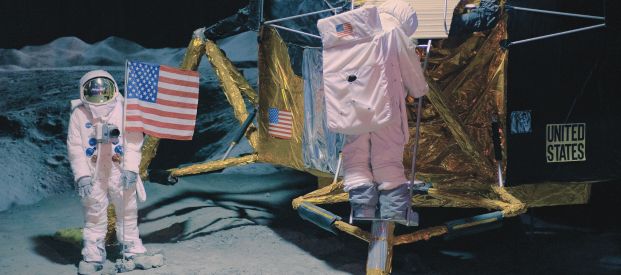Moonshot Memories: Celebrating the Giant Leap of 1969
On 21 July 1969, American astronaut Neil Armstrong became the first man to walk on the moon. The words he uttered on this day, “That’s one small step for man, one giant leap for mankind”, are perhaps one of the most famous declarations in history. Here, we take a look at the events of that historic day and reflect on the legacy that Armstrong and his colleagues left behind.
The Space Race
During the 1950s and 1960s, the United States and the Soviet Union were locked in a battle to become the first nation to succeed in space exploration. Known as the Space Race, this intense rivalry was a key aspect of the Cold War and began with the launch of the first Soviet Sputnik satellite in 1957.
On 25 May 1961, President John F Kennedy upped the ante when he declared that before the end of the decade, the United States would land a man on the moon. This set into motion NASA’s Apollo space programme, which ran from 1961 to 1972, at an estimated cost of $25 billion.
Apollo 1 was set to be the first crewed flight in the programme, but tragically the three astronauts on board were killed in a cabin fire during a launchpad test on 27 January 1967. The accident led to a major redesign of the spacecraft and a strengthening of safety protocols. Subsequent successful test missions were carried out, both crewed and uncrewed, including a full rehearsal for the moon landing.
We have lift off
Shortly after 9.30am EDT, on 16 July 1969, the Apollo 11 spaceflight blasted off from Cape Kennedy, Florida, watched by millions around the world. The crew members were Commander Neil Armstrong, Lunar Module Pilot Buzz Aldrin and Command Module Pilot Michael Collins. After a smooth launch, the crew set off on their journey of approximately 250,000 miles to the moon.
Four days later, Apollo 11 divided into two separate spacecraft, with Armstrong and Aldrin on board the lunar module Eagle, and Collins piloting the command module Columbia. As the craft touched down on the moon’s surface, Armstrong famously said: “The Eagle has landed.” At 10.56pm EDT, watched by 650 million people around the world, Armstrong stepped onto the moon, and spoke the unforgettable words: “That’s one small step for man, one giant leap for mankind.” Twenty minutes later, he was joined by Buzz Aldrin, and the pair spent two hours exploring the surface of the moon. They took photographs, collected rock and soil samples, set up equipment to carry out experiments, and left behind commemorative medallions honouring the Apollo 1 crew.
After their iconic moon walk, the astronauts returned to the Eagle for a rest period. The Eagle then departed from the moon, rejoined the Columbia, and the Apollo team set off on their return journey to Earth.
Splash landing
The Apollo spacecraft splash-landed in the Pacific Ocean on 24 July, and the astronauts were safely recovered by boat. The entire mission had taken eight days, three hours, 18 minutes and 35 seconds. After spending 21 days in quarantine, the Apollo 11 crew were honoured with a ticker tape parade in New York City, followed by parades in their hometowns, and a goodwill tour around the world.
President Kennedy’s bold vision to land a man on the moon had been realised, and Armstrong, Aldrin and Collins secured their places in the history books. Following the success of the Apollo missions, the world’s fascination with space has continued, fuelled by new discoveries, advances in technology, and the unforgettable excitement of those first few steps on the moon.










